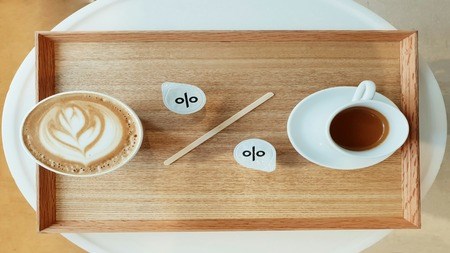There are at least four types of thrifting opportunities:
- Thrift-specific shops, where people are able to sell their unwanted items to the shop for resale.
- Charity shops, where items are donated and resold, thereby providing a specific charity with an income.
- Flea markets, where people rent a space in order to sell second-hand decor and furniture.
- Online platforms - shop across the country, for items you seek.
Benefits of thrifting decor
- Budget-friendly - affordable decor.
- Sustainable - someone’s donation is recycled into a wanted functional piece.
- Original - you can own original artworks at a fraction of the price.
- Transformational - tap into your artistic side by upcycling a thrifted item.
- Value - find high-end goods at discounted prices.
- Environmental - stops items ending up in landfill.
Timeless classic’s
What to look for:
Dinnerware: plates, cups, saucers, bowls and serving platters. Note that some people even buy a mix of designs to create a modern, funky effect.
Vases: glass never dates! Even the most hideous looking vase (in ceramic for example) can be transformed with a lick of paint or an effect.
Soft furnishings: cushions especially, can completely transform a room.
Artwork and frames: This is all about what you like, regardless of whether you know of the artist or not. And even if you don’t like the artwork itself, perhaps the frame appeals to you.
Lamps and light fittings: Shades are easy to update.
Baskets and bins: Not just for storage, baskets and bins can easily be transformed or used as a display item.
How to plan your thrift trip
Make a list of what you are looking for, be it furniture, soft furnishings, fabric, or glassware.
Plan a route of thrift/charity shops. Don’t ignore the dingy, as sometimes these stores have hidden gems.
Be prepared to be distracted and possibly come home with items you didn’t know you needed.
Examine each piece for cracks or broken bits; consider whether these can be fixed or hidden.
If you find a signed item, google the name of the artist to check what their pieces usually sell for.
Thrift flip
Get crafty, and give something tired or marked/stained a new lease of life with a simple DIY. The trick is to let your imagination run wild. Once you have revamped or repurposed something, there is a feeling of achievement and if it feels good to you, even better.
- Wooden pieces can be re-stained or sanded down and painted.
- Lampshades can be recovered with a piece of fabric you might also source second-hand.
- Baskets can be bleached, although this may not create a uniform look.
- Stainless steel and wire can be spray painted.
- Porcelain and china can also be over-painted.
- Pillow or cushion covers can be enhanced with a fringe or tassels.
- Stools can be reworked into bookcases.
- Old doors can be cleaned up and used as a desktop.
- Pieces of interesting wood can be turned into shelves.
- Frames can be used on the walls without artwork. A collection of similar different size frames can be a conversation piece.
- Knobs or handles can always be replaced.
- Trays can be used to hold all manner of items.
Any container can be used as a plant holder. Jars, for example, can become cotton-ball or toothbrush holders. Mirrors of all sizes can also become a feature as a collection. Interesting fabric pieces can be put into frames as an art piece. Old suitcases, in ascending sizes, are popular as side tables. Books have many uses. Consider interesting book cover’s for use as wallpaper, or artwork.
Rules
There are no rules actually. If you like something, and the price is affordable it is likely someone else will too. Buy now and keep aside while you research ideas on how to use the piece. Be warned though, thrifting can become quite the hobby, and you may end up over-cluttering your space. As you develop an instinct for thrifting, you’ll be able to tone down your spending, hone your instincts, and enhance your lifestyle with decor that will be commented on.





